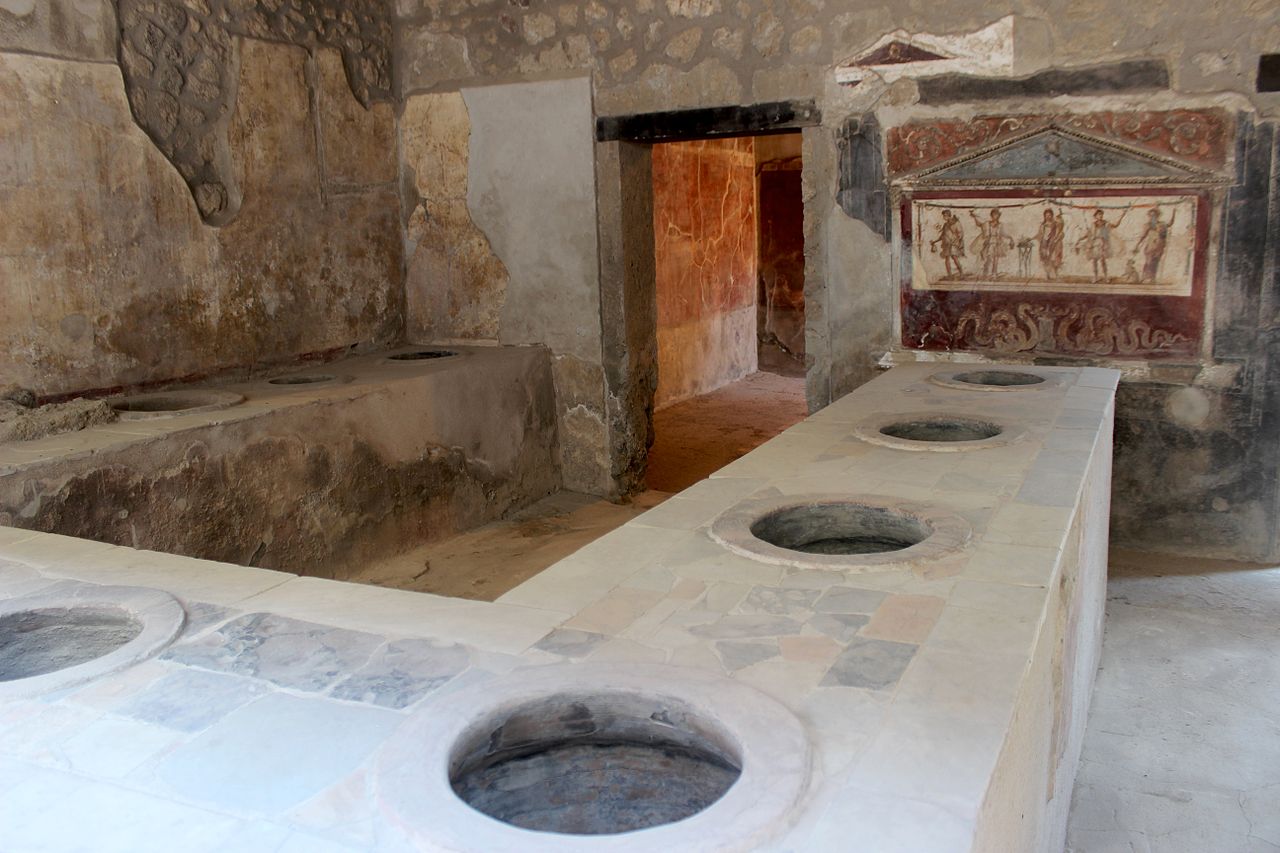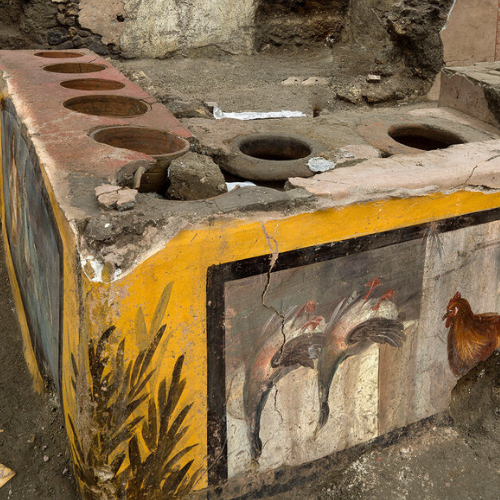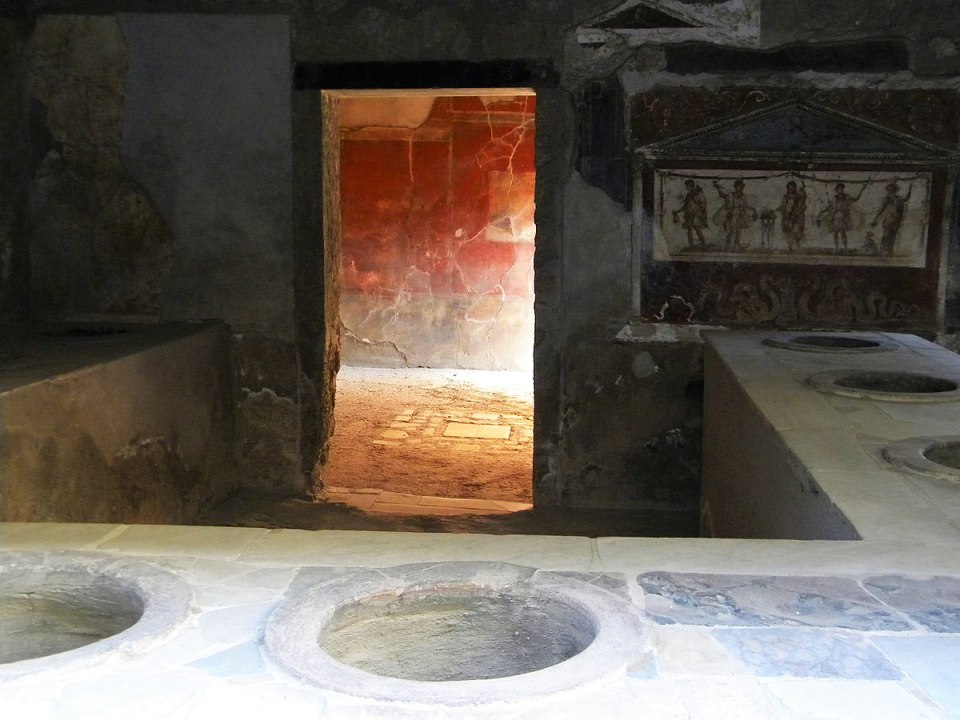In the bustling streets of Pompeii, a thriving Roman city that met its tragic end in 79 CE, the Thermopolium of Vetutius Placidius served as a popular stop for those seeking a quick, hot meal. This ancient establishment, operating between the late 2nd and early 1st centuries BCE, functions as an early precursor to modern-day fast food joints. Like their modern counterparts, thermopolia catered to those who needed a convenient and affordable option for lunch, particularly workers far from home or those without kitchens.
The Role of Thermopolia in Ancient Roman Society
In Pompeii, 89 such establishments have been uncovered, and the thermopolium of Lucius Vetutius Placidius stands out as the most well-preserved. Situated in Regio I, Insula 8, this thermopolium offers fascinating insights into the lives of the ancient Romans and the vital role such establishments played in daily Roman life. Serving as both a food provider and a space for social interaction, the thermopolium functioned as an essential feature of Pompeii’s urban landscape, where working-class Romans sought to refuel during their long days.

The Architecture and Design of the Thermopolium
One of the most notable features of the thermopolium is its beautifully decorated counter, which houses six dolia—large, spherical terracotta containers standing 1.5 to 1.6 meters tall. These containers, sealed with lids, were used to store and serve a variety of hot foods like chickpeas, beans, and dried fruits. The counter itself is adorned with vibrant frescoes that reflect the establishment’s welcoming atmosphere. The dolia’s size and design suggest that they could hold large quantities of food, indicating the establishment’s potential for serving numerous customers during peak hours.
Financial Insights: A Discovery of Coins
In an intriguing twist, archaeologists discovered a hidden stash of 1,385 bronze coins in one of the dolia, with a total value of approximately 585 sesterces. These coins were likely accumulated over several days of business, possibly stored by the owners for safekeeping or as a precaution against theft. The discovery of these coins sheds light on the financial operations of the thermopolium, offering an unusual but valuable glimpse into the daily business practices of Pompeii’s residents. The coins are now on display at the National Archaeological Museum of Naples, where they continue to captivate visitors and scholars alike.

Religious Practices and the Lararium
In addition to its culinary functions, the thermopolium also reflects the Romans’ spiritual life. On the back wall of the establishment, there is a beautifully preserved aediculum—a small shrine dedicated to the lararium (household gods). This space would have been devoted to the Lari (protective deities of the home), Genius (the guardian spirit of the owner), Mercury (the god of commerce), and Dionysus (the god of wine). These deities were revered by the owner and patrons alike, illustrating how the Romans intertwined commerce, family, and religion in their everyday lives.

The presence of the lararium suggests that Roman business owners often sought divine protection for both their personal and professional endeavors. This mixture of business and spirituality highlights the role of religion in Roman public and private life, where everyday activities like running a business were seen as requiring divine favor and guidance.
The Private Residence and Garden
Another fascinating aspect of the thermopolium of Vetutius Placidius is its connection to the owner’s private residence. This residence was attached to the thermopolium, with an independent entrance leading to an internal garden. It is likely that this garden was used to grow aromatic herbs essential for cooking—such as thyme, rosemary, and basil—which were crucial in Roman culinary practices. This emphasis on fresh ingredients reflects the Roman appreciation for quality food, even in the context of a quick meal, offering a deeper understanding of the culinary traditions of the time.

A Window into Roman Life
The Thermopolium of Vetutius Placidius is more than just a place where food was served; it provides a snapshot of Roman life, reflecting the integration of business, family, and spirituality. The blend of practical concerns—like feeding a busy populace—and sacred practices, such as honoring household gods and the god of commerce, speaks to the complexity of Roman society. These establishments were not just places of nourishment; they were part of a broader social and cultural fabric.

The discovery of this well-preserved thermopolium contributes significantly to our understanding of ancient Roman society. It reveals a bustling, vibrant community where food, commerce, and religion intersected seamlessly in daily life. Furthermore, the thermopolium’s preservation allows modern visitors and scholars to imagine what it might have been like to stop by for a quick meal in the streets of ancient Pompeii.
Conclusion: The Lasting Legacy of the Thermopolium
The Thermopolium of Vetutius Placidius, through its well-preserved architecture, artifacts, and spiritual practices, offers a rare and fascinating glimpse into ancient Roman life. From the business practices that supported the local economy to the religious devotion embedded in everyday activities, this discovery enriches our understanding of Pompeii’s vibrant culture. As an intersection of culinary traditions, commercial activity, and religious life, the thermopolium stands as a testament to the complexity and sophistication of Roman society, offering an invaluable window into the past.

